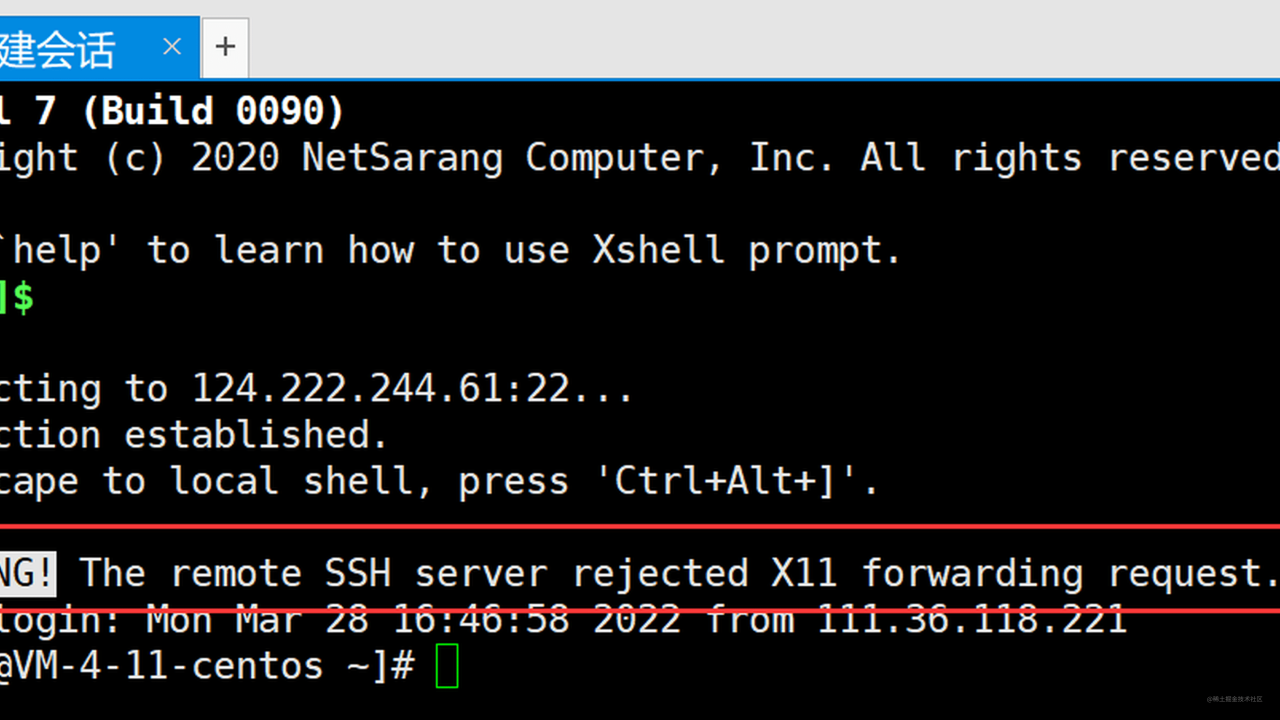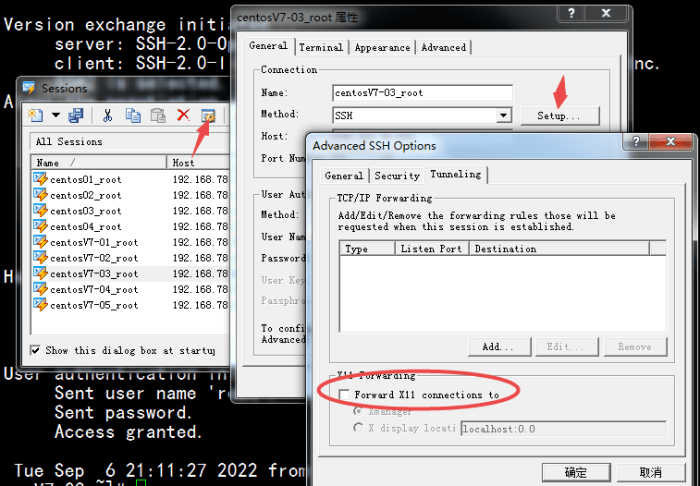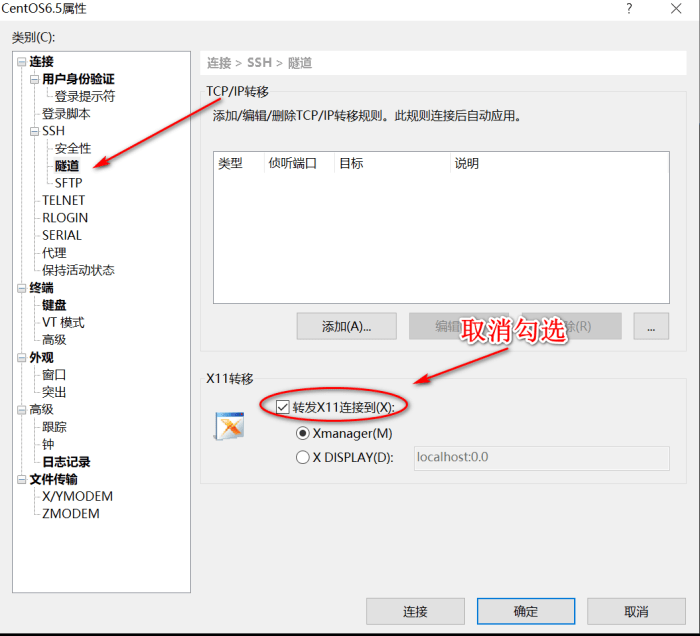X11 forwarding is a useful feature that allows you to access graphical applications running on a remote server from your local machine. However, sometimes you may encounter the error “the remote ssh server rejected x11 forwarding request”. This can be a frustrating issue, but it is usually easy to resolve.
In this article, we will discuss the causes of this error and provide step-by-step instructions on how to fix it. We will also cover some troubleshooting tips and alternative methods for graphical remote access.
SSH Server Configuration

The SSH server configuration plays a crucial role in determining whether X11 forwarding is allowed or rejected. Let’s explore the relevant configuration options and how to modify them.
To check and modify the SSH server configuration, you can edit the configuration file, typically located at /etc/ssh/sshd_config on Linux systems.
X11Forwarding Option
The X11Forwarding option controls whether X11 forwarding is allowed. By default, it’s set to no , which means X11 forwarding is disabled. To enable it, set this option to yes .
X11DisplayOffset Option
The X11DisplayOffset option specifies the starting display number for forwarded X11 connections. This is useful if you have multiple X11 servers running on the remote machine and want to avoid conflicts.
X11UseLocalhost Option
The X11UseLocalhost option determines whether X11 connections should be forwarded to the local host only. Setting this option to yes restricts X11 forwarding to connections originating from the local machine.
Client-Side Configuration
The client-side configuration plays a crucial role in enabling X11 forwarding. It involves modifying settings within the SSH client to allow the forwarding of X11 connections from the remote server to the local display.
To configure the client for X11 forwarding, follow these steps:
Configuration Steps
-
- Open the SSH configuration file, typically located at ~/.ssh/config.
- Add the following line to the file:
ForwardX11 yes
- Save the file and close it.
- Establish an SSH connection to the remote server using the modified configuration file.
- Once connected, X11 applications running on the remote server can be forwarded to the local display.
Network Connectivity

Network connectivity plays a crucial role in enabling X11 forwarding. X11 forwarding requires a reliable and secure network connection between the client and the remote server to establish a graphical display session.
Troubleshooting Network Issues
When X11 forwarding fails, network connectivity issues are often the culprit. Here are some common troubleshooting steps:
- Check firewall settings: Ensure that both the client and server firewalls allow traffic on the X11 forwarding port (usually port 6000).
- Verify network connectivity: Test if the client and server can communicate by pinging each other or using a traceroute utility.
- Examine routing tables: Ensure that there are no routing issues that prevent the client from reaching the server.
- Consider network latency: High latency can cause X11 forwarding sessions to become slow or unresponsive.
By troubleshooting network connectivity issues, you can identify and resolve the underlying cause and establish a stable X11 forwarding connection.
Firewall Rules

Configuring firewall rules is crucial to ensure that X11 forwarding traffic is permitted through your network. Firewall rules act as gatekeepers, determining which incoming and outgoing network traffic is allowed or blocked based on specified criteria.
To check and modify firewall rules, you can use the following commands:
Linux and macOS
- Check firewall rules:
sudo ufw status - Allow X11 forwarding:
sudo ufw allow 6000:6009/tcp
Windows
- Check firewall rules: Go to Control Panel > Windows Defender Firewall > Advanced settings > Inbound Rules
- Allow X11 forwarding: Create a new inbound rule that allows TCP connections on port range 6000-6009
X11 Server Setup
X11 servers are programs that provide graphical user interfaces (GUIs) for remote applications. When X11 forwarding is enabled, the X11 server on the client machine connects to the X11 server on the remote machine, allowing the client to display the graphical output of the remote applications locally.
To set up an X11 server, you need to install an X11 server software package on your client machine. There are several popular X11 server packages available, such as XQuartz (for macOS) and VcXsrv (for Windows). Once you have installed an X11 server, you need to configure it to connect to the remote X11 server.
The specific configuration steps will vary depending on the X11 server software you are using.
Setting Up XQuartz on macOS
To set up XQuartz on macOS, follow these steps:
- Install XQuartz from the XQuartz website.
- Open the XQuartz Preferences application.
- Click on the “Security” tab.
- Select the “Allow connections from network clients” checkbox.
- Click on the “Apply” button.
Setting Up VcXsrv on Windows
To set up VcXsrv on Windows, follow these steps:
- Install VcXsrv from the VcXsrv website.
- Run the VcXsrv application.
- Click on the “Options” button.
- Select the “Enable SSH forwarding” checkbox.
- Click on the “OK” button.
SSH Tunneling
SSH tunneling is a technique that allows you to securely forward X11 traffic over an SSH connection. This can be useful if you are working on a remote server that does not have a graphical user interface (GUI), or if you want to access a GUI application on a remote server from a client machine that does not have X11 forwarding enabled.To
set up SSH tunneling, you will need to use the
-L option of the ssh command. The following command will create a tunnel from port 6000 on your local machine to port 6000 on the remote server
“`ssh
-L 6000
localhost:6000 remote_server“`Once the tunnel is established, you can use the following command to launch a GUI application on the remote server:“`ssh
X remote_server
“`This will open a new X11 session on your local machine, and you will be able to run GUI applications on the remote server as if they were running locally.
Alternative Methods
When X11 forwarding is not feasible, alternative methods can provide graphical remote access.
Two common alternatives are Virtual Network Computing (VNC) and Remote Desktop Protocol (RDP).
VNC
VNC allows remote control of a graphical desktop interface over a network connection.
- Pros:
- Cross-platform compatibility
- Low latency
- Cons:
- Less secure than X11 forwarding
- Requires installation of VNC server and client software
RDP
RDP is a proprietary protocol developed by Microsoft for remote desktop access.
- Pros:
- High performance and security
- Built-in support in Windows operating systems
- Cons:
- Not open source
- Limited cross-platform support
Troubleshooting Techniques
Troubleshooting X11 forwarding issues can be challenging, but following a structured approach can help identify and resolve the root cause. Here’s a comprehensive list of techniques to assist in troubleshooting:
Start by verifying the basics, ensuring that X11 forwarding is enabled on both the server and client sides. Check firewall rules and network connectivity to rule out any potential obstacles.
Common Error Messages
- “X11 forwarding request failed on channel 0”: This error indicates a failure during the X11 forwarding establishment. Check the server’s SSH configuration to ensure X11 forwarding is enabled and verify that the client’s X11 server is running.
- “Can’t open display”: This error suggests that the client cannot connect to the X11 server. Ensure the X11 server is running and accessible on the client machine.
- “Permission denied”: This error occurs when the client lacks permission to access the X11 server. Verify that the user has appropriate permissions and that the X11 server is configured to allow connections from the client.
Advanced Troubleshooting
- Check SSH logs: Examine the SSH logs on both the server and client to identify any errors or warnings related to X11 forwarding.
- Use SSH -v flag
Run the SSH command with the
v flag to increase verbosity and obtain detailed information about the X11 forwarding process.
- Enable X11 debugging : Modify the SSH configuration on the server to enable X11 debugging and capture additional diagnostic information.
- Disable SELinux : If SELinux is enabled on the server, temporarily disable it to rule out any potential interference with X11 forwarding.
- Contact support : If all else fails, consider reaching out to the SSH server or X11 server vendor for technical support.
Security Considerations
X11 forwarding allows users to access graphical applications running on a remote server from their local machine. While convenient, it also introduces security risks that must be carefully considered.X11 forwarding can potentially expose sensitive information, such as keystrokes and mouse movements, to the remote server.
Additionally, malicious actors could exploit vulnerabilities in the X11 protocol to gain unauthorized access to the user’s local machine.
Mitigating Potential Risks
To mitigate these risks, it is recommended to:
- Enable X11 forwarding only when necessary.
- Use a secure SSH connection with strong encryption.
- Restrict access to X11 forwarding to trusted users.
- Monitor X11 forwarding activity for suspicious behavior.
- Use a dedicated X11 server for forwarding.
- Consider using a VPN to add an extra layer of security.
Advanced Configuration
Optimizing Performance
- Enable compression to reduce the amount of data transmitted over the network, resulting in faster X11 forwarding.
- Use a dedicated graphics card on the server to handle X11 forwarding, offloading the task from the CPU and improving performance.
- Configure the X11 server on the client to use a lightweight window manager like IceWM or Fluxbox to minimize resource consumption.
Customizing the Experience
- Set up a custom X11 display on the client to isolate X11 forwarding sessions and prevent interference with other applications.
- Configure the X11 forwarding options to specify the desired display resolution, color depth, and other parameters.
- Use X11 forwarding to access remote applications with specialized graphics requirements, such as CAD or video editing software.
Final Thoughts
X11 forwarding is a powerful tool that can greatly enhance your remote access experience. By following the steps Artikeld in this article, you can troubleshoot and resolve the “the remote ssh server rejected x11 forwarding request” error quickly and easily.
If you continue to experience problems, don’t hesitate to seek help from your system administrator or a qualified IT professional.